Why you can trust Tom's Hardware
To read about our monitor tests in-depth, please check out Display Testing Explained: How We Test PC Monitors. We cover brightness and contrast testing on page two.
Uncalibrated – Maximum Backlight Level
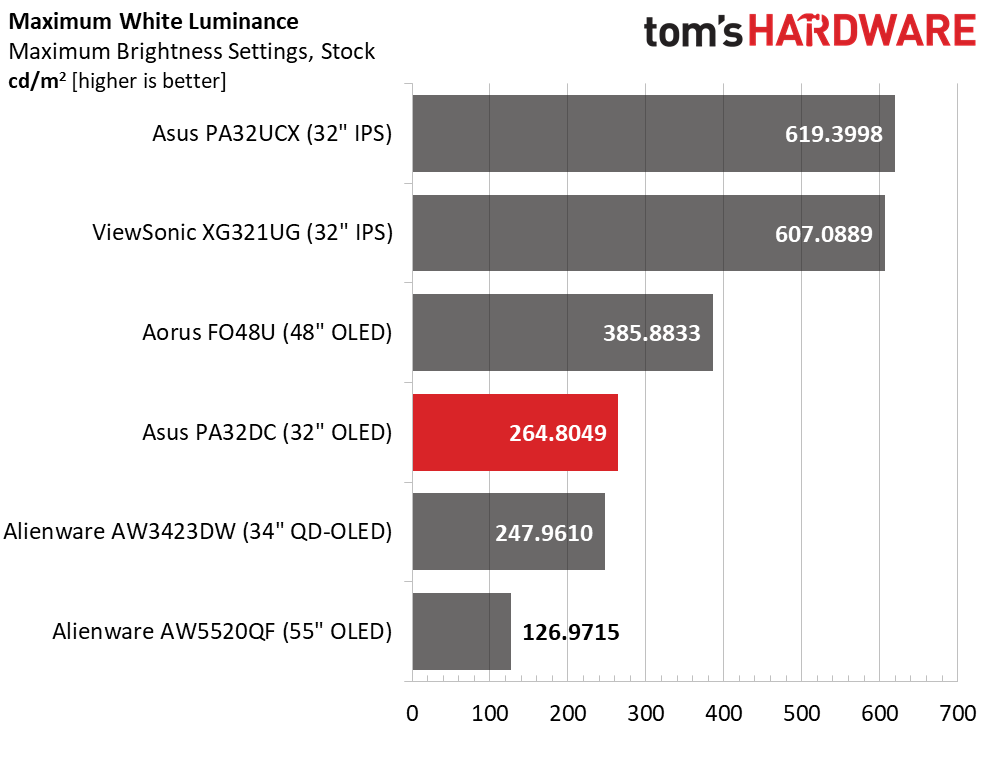
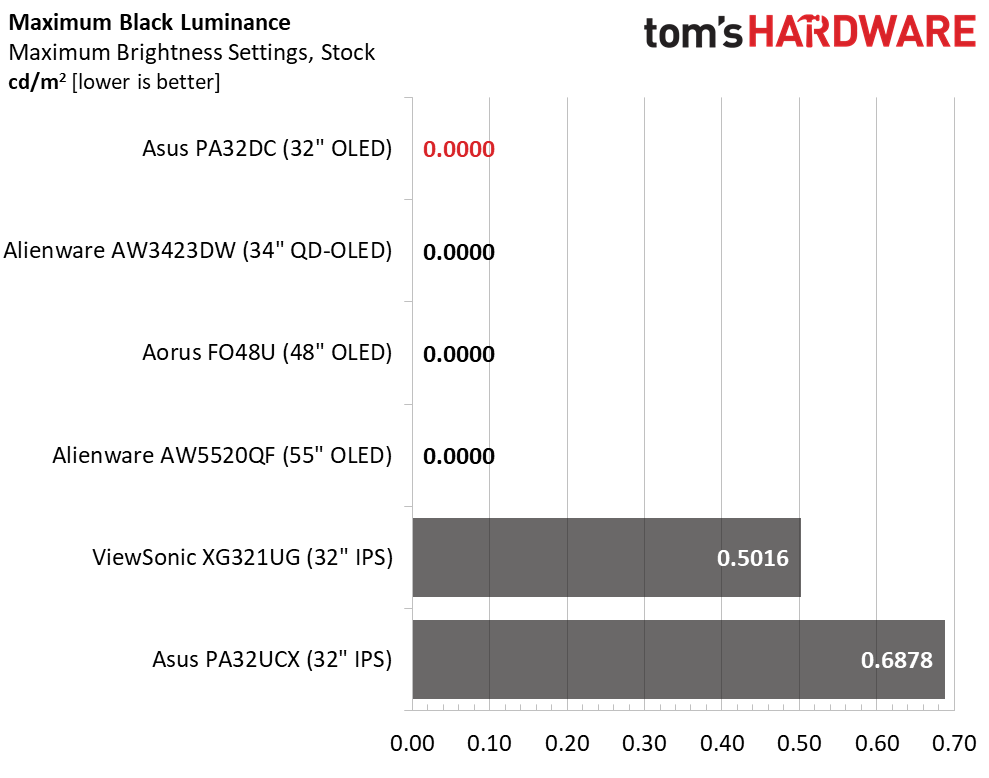
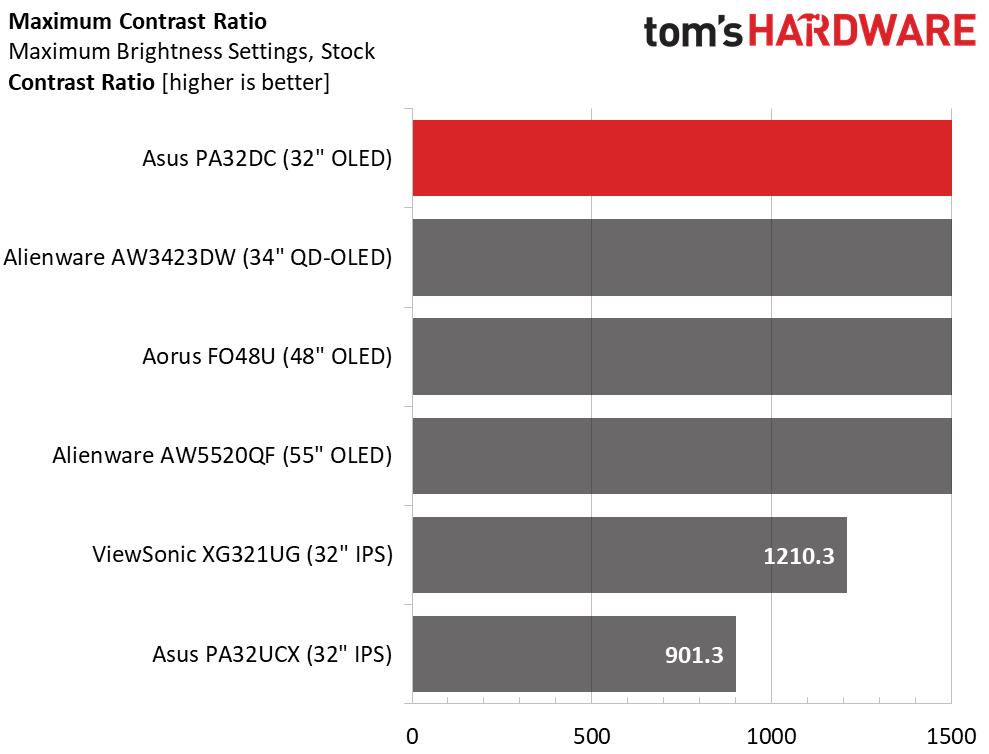
The PA32DC is rated for 250 nits in SDR mode, and my sample crested at 264. While this is below the level of an average LCD panel, it is more than enough light for a monitor used in professional environments. A post-production room will likely be dark or very dimly lit. And the video villages used in on-site filming locations are typically sheltered. There is plenty of light here.
You’ll see very high brightness levels for the MiniLED panels in both SDR and HDR modes. This is their greatest strength. They are far brighter than any OLED, but ultimately, it’s the contrast that counts. They are the better choice if your environment requires an exceptionally bright panel.
As with every OLED I’ve tested, black levels are unmeasurable by my, or any available instruments. When I say the pixels are turned off, I do not exaggerate. They’re completely off. So, contrast is theoretically infinite. I cannot overstate the visual improvement this makes over an LCD panel. Even a MiniLED display can’t produce a picture this deep and saturated. Dynamic range is king and the PA32DC is the top member of that monarchy.
After Calibration to 200 nits
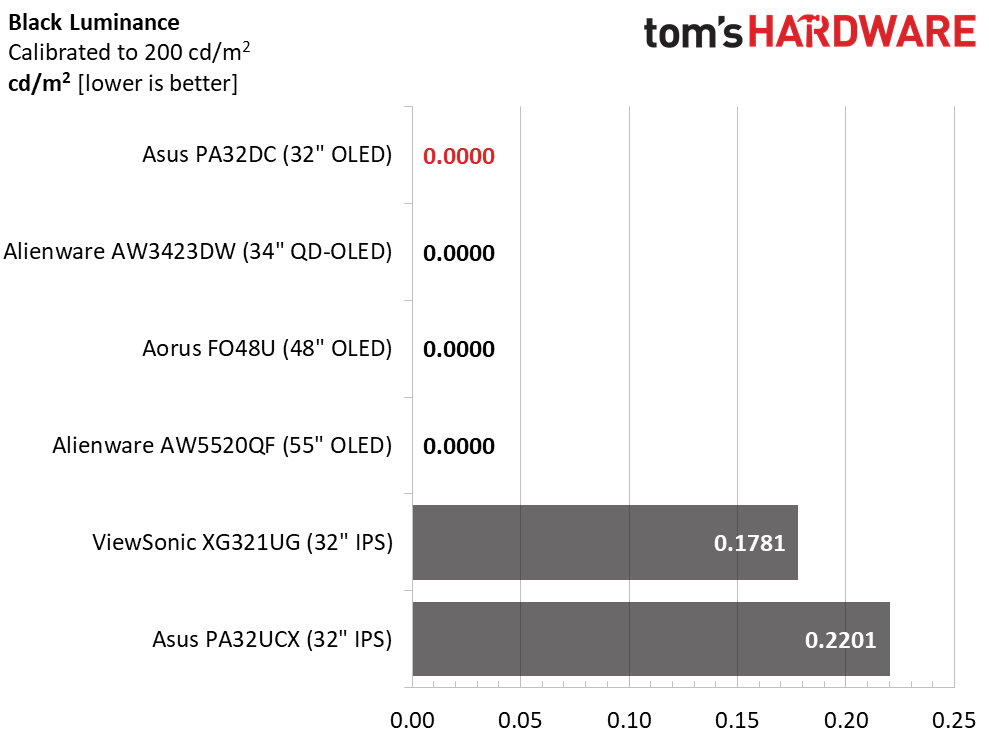
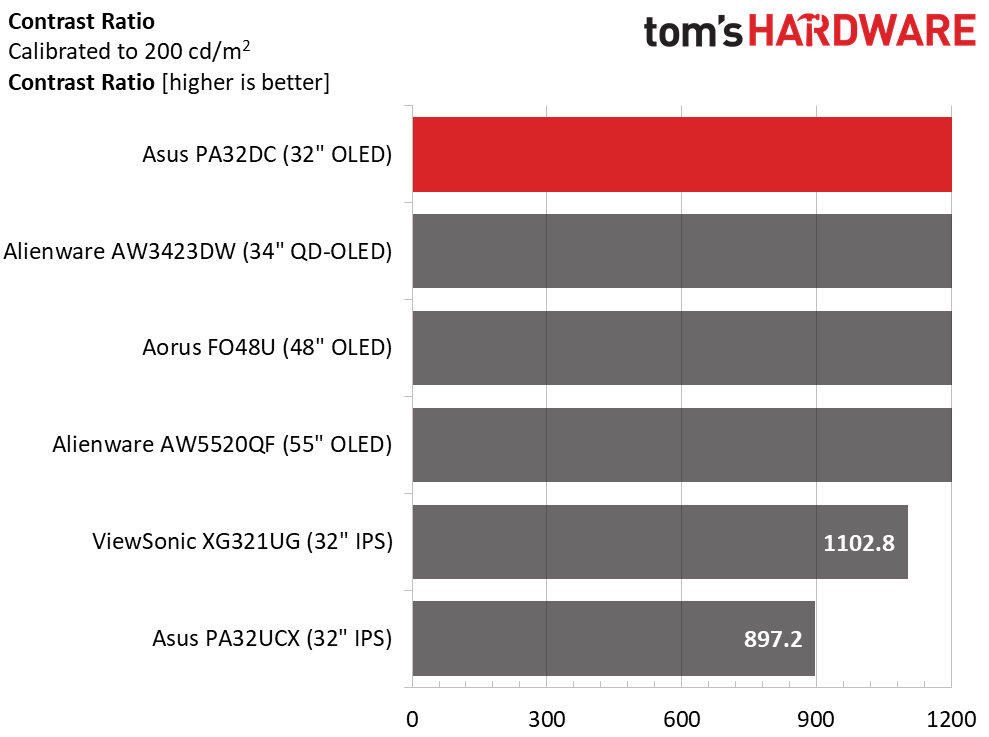
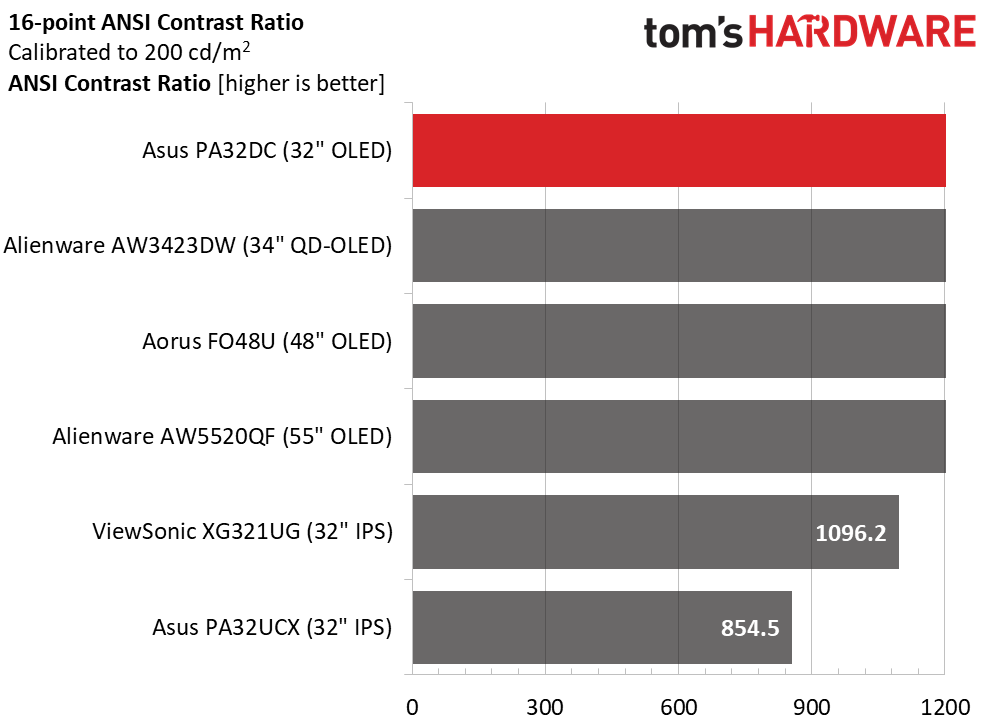
The PA32DC’s contrast and black levels are unchanged after calibration of the User mode. Black levels are still too low to measure. The checkerboard pattern I use to measure intra-image contrast also has unmeasurable blacks.
It should be noted that the two MiniLED panels were tested without their local dimming feature turned on. When employed, it increases static contrast to around 6,000:1. It does not affect the ANSI test.
MORE: Best Gaming Monitors
Get Tom's Hardware's best news and in-depth reviews, straight to your inbox.
MORE: How We Test PC Monitors
MORE: How to Buy a PC Monitor: A 2022 Guide
MORE: How to Choose the Best HDR Monitor
Current page: Brightness and Contrast
Prev Page Response, Input Lag, Viewing Angles & Uniformity Next Page Grayscale, Gamma and Color
Christian Eberle is a Contributing Editor for Tom's Hardware US. He's a veteran reviewer of A/V equipment, specializing in monitors. Christian began his obsession with tech when he built his first PC in 1991, a 286 running DOS 3.0 at a blazing 12MHz. In 2006, he undertook training from the Imaging Science Foundation in video calibration and testing and thus started a passion for precise imaging that persists to this day. He is also a professional musician with a degree from the New England Conservatory as a classical bassoonist which he used to good effect as a performer with the West Point Army Band from 1987 to 2013. He enjoys watching movies and listening to high-end audio in his custom-built home theater and can be seen riding trails near his home on a race-ready ICE VTX recumbent trike. Christian enjoys the endless summer in Florida where he lives with his wife and Chihuahua and plays with orchestras around the state.